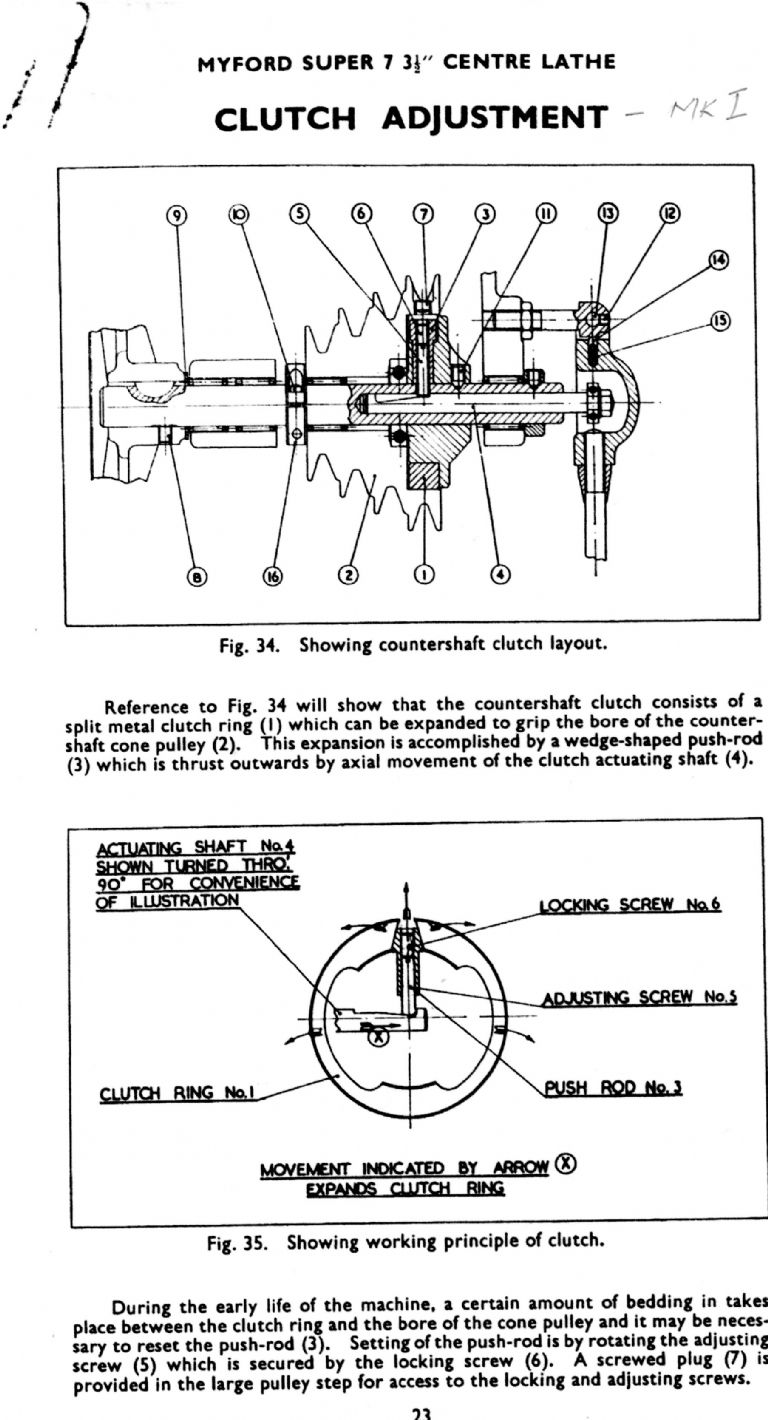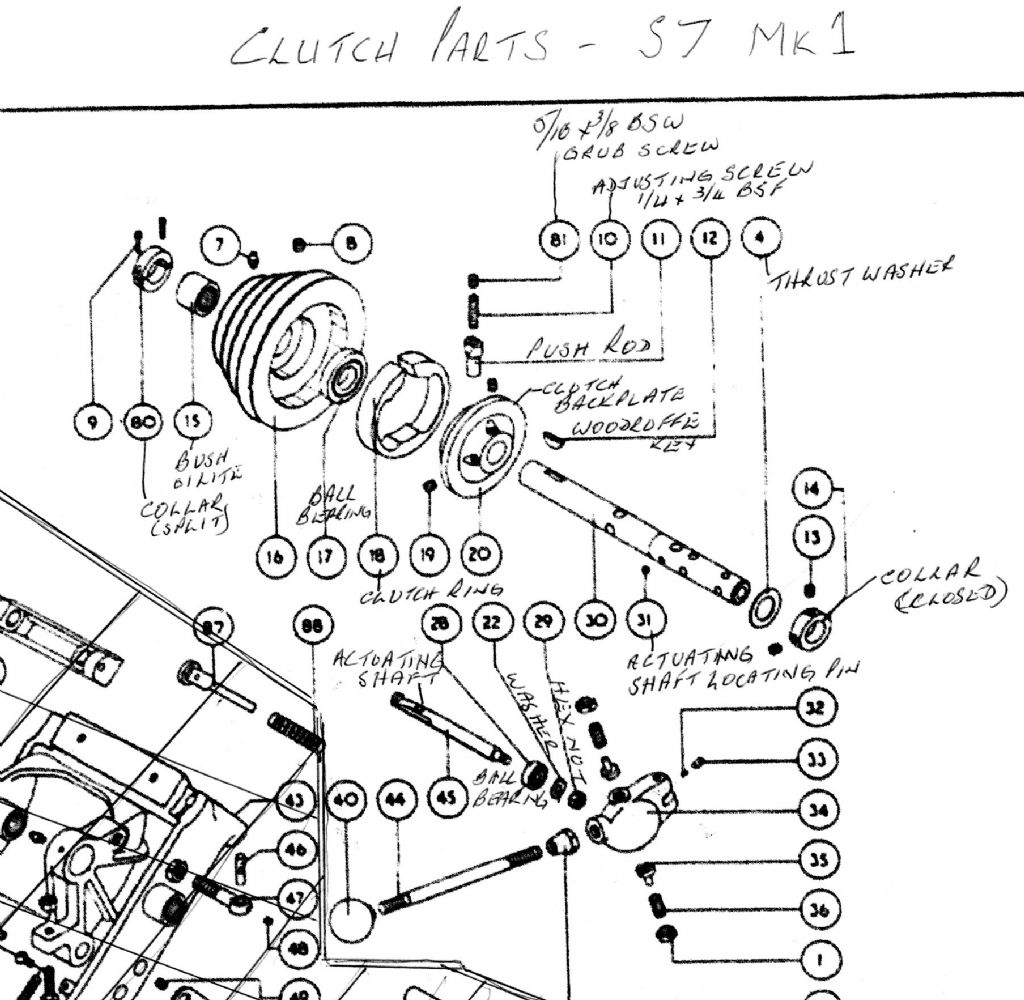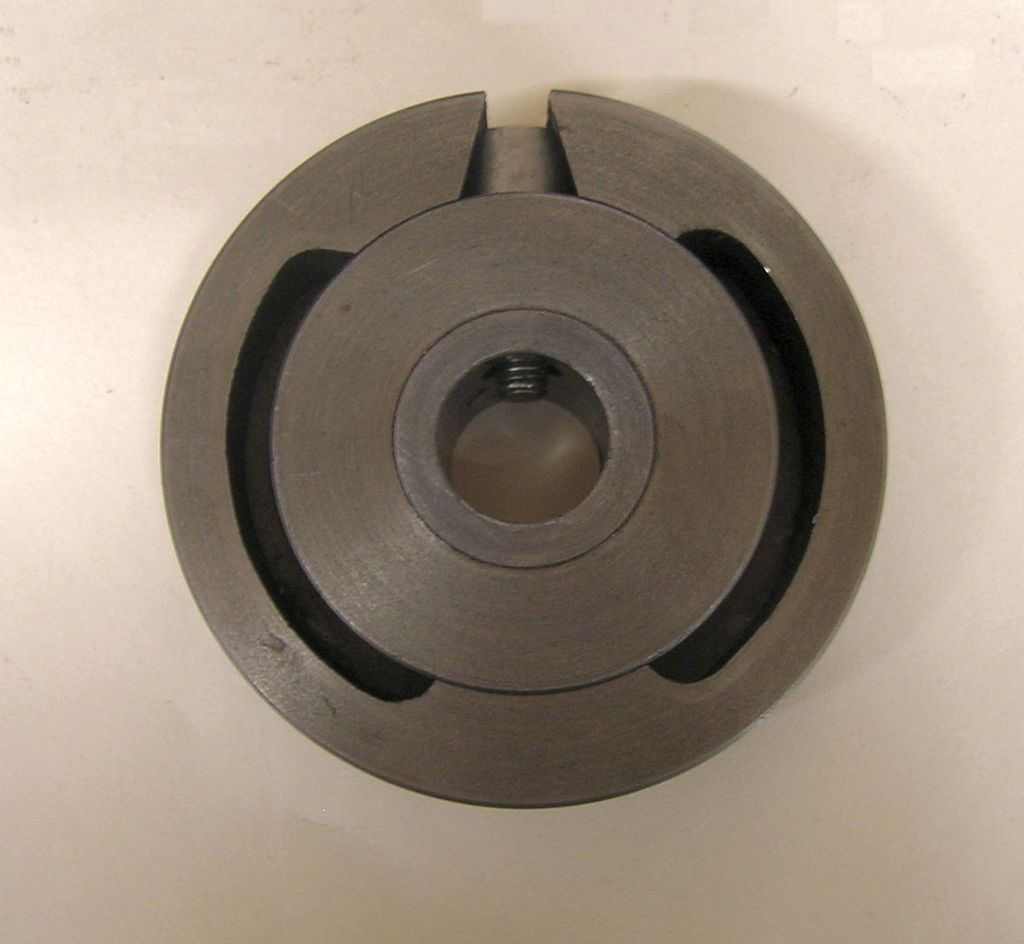I've got an early S7, with this same clutch. The horseshoe shaped friction part is expanded by the wedge, so as the clearance between the shoe and the bore of the pulley gets larger, the wedge has to distort the shoe further. Since the shoe is cast iron there's only one result. Ping.
I've looked at this on mine, and bought some tufnol sheet to make a replacement horse shoe. But I haven't tried making one yet, as the original is still in one piece. To reduce the amount the shoe has to expand I sleeved the inside of the pulley bore.
If I had a broken horseshoe I'd probably carve one out of plywood to get the lathe usable, then use the broken bits as a pattern for a replacement of more robust material. If the horse shoe is made out of a more elastic material than the original cast iron the internal shape of it probably doesn't matter too much, it's just the OD which needs to be round and a close clearance in the bore of the pulley.
Personally I'd bronze weld your broken bits back together, and take my chance that I could true it up enough afterwards, maybe turning the outer diameter true then adding a sleeve into the mating bore. But you need a lathe to mend a lathe…
So starting from here, I'd make a plywood "horse shoe", noting that the inner shape doesn't matter too much, it's just the OD which needs to be approximately round and a sensible fit in the pulley bore. I'd glue the plywood into the bore of the pulley with super glue, as you know you can cook this later and get the glue to part. Put the (now solid) clutch back together and reassemble the lathe drive. Now make a new horseshoe out of a suitable material. You are back to where you started, with using the lathe no clutch i.e. stop start. Nothing wrong with that! I'd still go with my lump of tufnol as first choice for making a horse shoe, but bronze would likely be second choice. Epoxy bonded plywood ( e.g. marine plywood) might be worth a try.
With a "new" horse shoe in your hand, strip the drive, cook the clutch to get the glue to give way, and re-assemble.
Plan B alternative approach has already been suggested, and is what I've done with mine. Fit a three phase motor and a VSD, jam the clutch up solid and take the operating handle off. Now use the VSD controls to stop and start the lathe. You can also have a "jog" function if you want it, easy peasy speed control and soft start as a bonus. I'm cautious about using DC braking as this slows the spindle and the inertia of the chuck might unscrew it. Maybe!
Plan C, I notice, is an advert in the "Wanted" section. Hope you are lucky!
Best rgds Simon
Leszek Delag.








